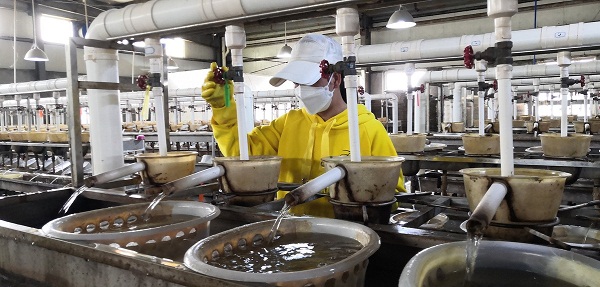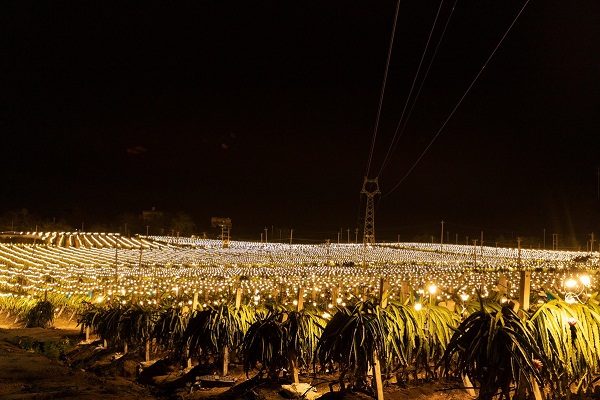
Life for residents of Dongguang and Youpan in Danzhou, Hainan province, has changed a lot with rising incomes and mastery of special farming skills, thanks to a nearby cactus farm.
The farm, the largest of its kind in China, covers 92 hectares of fields that had been abandoned or were being used to grow weak crops. Its annual output value now amounts to more than 70 million yuan ($11 million), according to Zhong Meimo Cactus Industry Co, the project developer.
"We are committed to developing a green healthcare business chain that will involve cultivation of edible and medicinal cactus, intensive processing, breeding research and the promotion of cultivation techniques and cactus culture," the company's general manager, Zhuang Liping, said.
With deep-processed cactus fruit products popular with consumers on the Chinese mainland, the company is seeking to expand its operations by more than 300 hectares around Hainan island to support the growth of a complete cactus economy, Zhuang said.
Elsewhere on the island, an orchard on 70-hectares of what had been degenerating rubber trees on the island's eastern coast — the World of Tropical Fruits in Qionghai — has introduced more than 400 varieties of tropical fruit.
Demonstrating agricultural opening-up and international cooperation, the project has bred about 150 varieties, 50 of which have entered commercial production. Fruit such as finger lime and "ice-cream fruit" have been warmly received by customers at home and abroad, and at handsome prices, said Wang Qiao, general manager of the orchard.
He said that more than 4.5 million tropical fruit seedlings have been planted on 1,300 hectares across Hainan in the past two years. The orchard's rare fruit trees are now part of China's National Tropical Plant Germplasm Resources Bank.

In another move, durian — a spiny fruit with a soft core grown on 2000 hectares in Hainan's southern counties since 2019 — is capturing the taste buds of Chinese consumers. Investors and growers are pondering ways to inject more money and labor, according to officials with the Hainan Academy of Agricultural Sciences.
"The domestic market for durian is huge. We are ready to integrate durian growing with deeper processing for more added-value and tourism products," said Baiyang, manager of a durian farm in Ledong county. He added that durian grown in Hainan will be superior in cost and quality to what is currently imported from Southeast Asian countries.
Endowed with abundant tropical resources and known as a "natural greenhouse", Hainan supplies more than 120 kinds of vegetables, fruits and marine products to both the domestic and overseas markets, especially during the winter.
Innovative upgrades and promotion of high-efficiency tropical farming has bolstered produce in Hainan, according to the provincial government, enriching the nation's "vegetable and fruit baskets" and solidly empowering the local agriculture that is to be a key part of the modern industrial structure of Hainan Free Trade Port.
Hainan has introduced more efficient and economical crops, such as tropical fruit and various melons, vegetables and other plants to replace low-efficiency products on 67,000 hectares of low-efficiency land that had been used to grow sugar cane and rubber trees in the past few years across the island, according to the provincial agricultural bureau.
Hainan has established more than 100 modern agricultural industrial parks that focusing on green and smart farming, scientific breeding and branding of tropical produce, covering major sectors in agriculture, forestry, animal husbandry, fisheries and other industries, it said.
Hainan is set to become a global gathering place for high-end agricultural talent and a sort of "Silicon Valley" for global agricultural technology innovation. Construction of the country's first free trade port is booming and when fully built out will be about 49 times the size of Singapore, according to the central government's master plan for the Hainan FTP released in June 2020.

